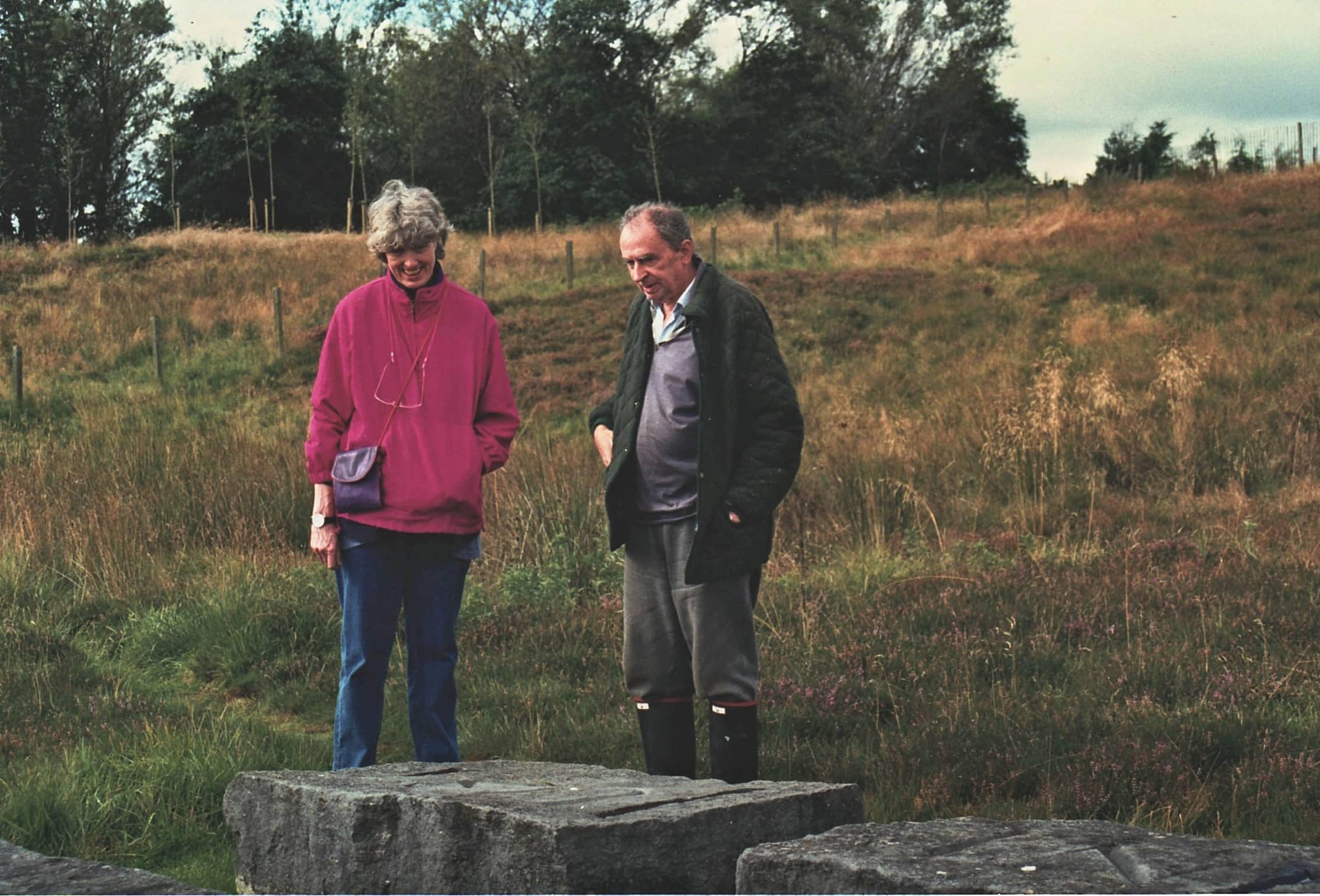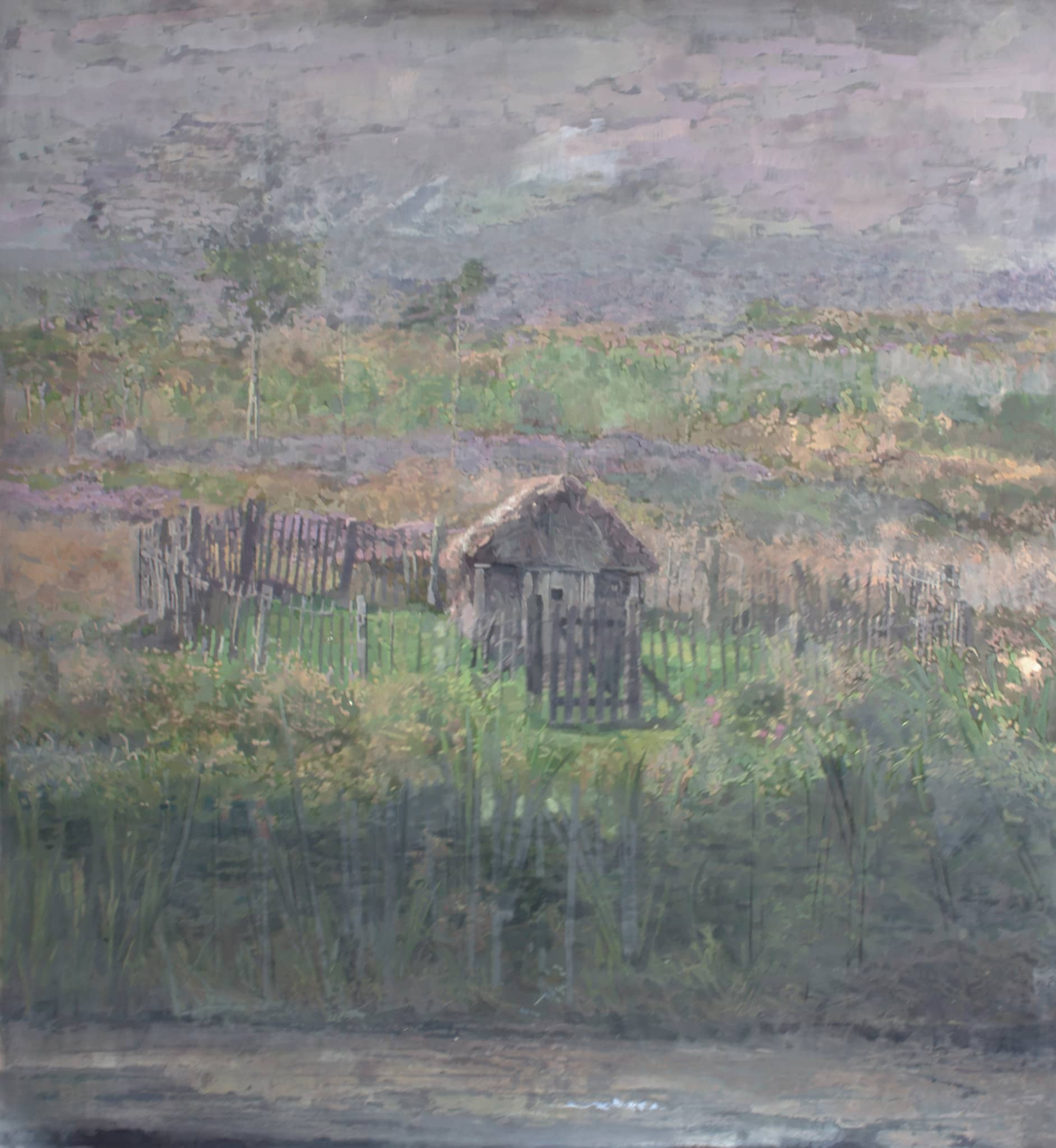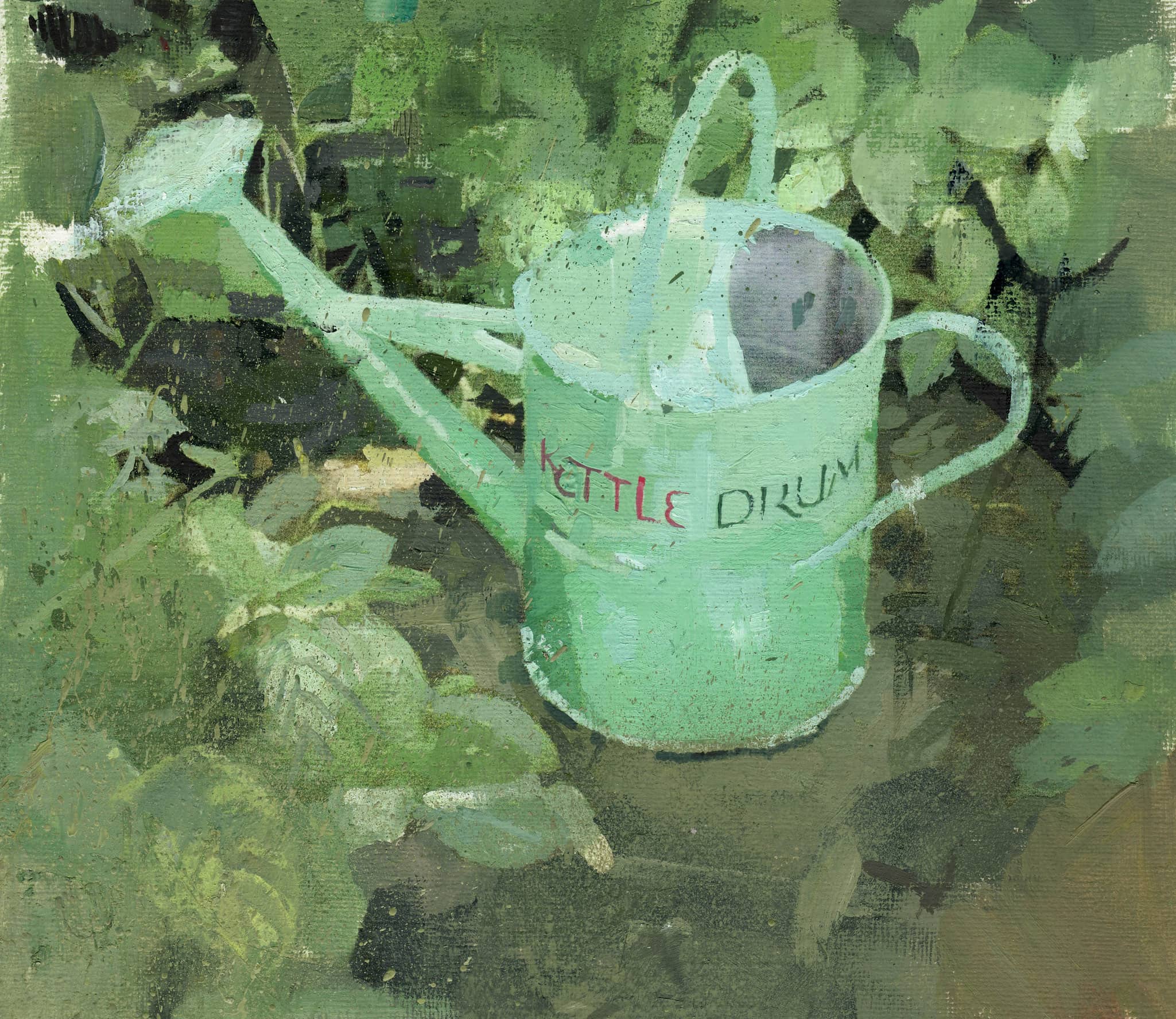Little Sparta
HW We’ve met to talk about the series of paintings you’ve made that were triggered by visits to Little Sparta. Could we begin by talking about Little Sparta itself? What is it?
EH Little Sparta is the garden at Stonypath created by Ian Hamilton Finlay and Sue Finlay, which they carved out of the Pentland Hills. I went there in September 1997 for the first time. It had an enormous impact on me. I was intrigued because it’s an enclosed garden. I’m very interested in enclosed gardens, and green spaces in an urban environment have always been a key part of my work. Little Sparta is enclosed by moors rather than buildings, but what excites me, as with the urban squares, is the contrast between the garden and its surroundings. Little Sparta is, of course, a poet’s garden and incorporates texts; it’s full of echoes from Greek philosophy and classical mythology. Again, this correlated strongly with subject matter I’ve used since a formative period when I lived in Greece as a student at the British School in Athens. So, there was a sort of shock of recognition in terms of my source material. In important ways my paintings have almost nothing to do with Ian’s artworks, but more to do with my reaction to him and his environment, an emotional response which became the trigger for this series of paintings and drawings.
An extract from conversation edited from a recording between Eileen Hogan and Hester Westley, May 2012 published in UL238,FH172,FR59: Paintings and Drawings by Eileen Hogan inspired by Ian Hamilton Finlay’s Garden, Little Sparta, Stonypath, Scotland. The Fleming-Wyfold Art Foundation, 2013

Ian Hamilton Finlay and Eileen Hogan at Little Sparta 1997
©Cathy Courtney
Eileen Hogan at Little Sparta
Published by the Little Sparta Trust
2020

Goose Hut
oil on paper, 115 x 100 cm
2012
Hogan’s paintings of Stonypath reflect in their turn a quietly contemplative imagination responding with an acutely transformative sensibility to Ian Hamilton Finlay’s artful horticulture. It is the work of one artist listening with creative attention and inwardness to the creative utterance of another.
Extract from Moments of Vision by Mel Gooding published by the Fleming-Wyfold Art Foundation, 2013
Hogan’s attention to the mood and language of technique connects with her admiration for the work of Michael Andrews. Lawrence Gowing once said of Andrews that by temperament he wanted ‘definite things to be definite and vague things to remain vague’. Similarly Hogan, even while painting the seductions of landscape, remains astringent. She resists lushness, bravura or any too obvious signature style. Even her fascination with light, its dappling on the beehives acting almost like camouflage, is handled in an almost impersonal manner. We cannot fall back on familiar responses to landscape, for these paintings offer a different way of looking and a romantic strangeness. We are used to seasonal change, but even the winteriness of her winter scene is screened by more layers of feeling and reserve than can be easily interpreted.
Extract from Eileen Hogan and Stonypath by Frances Spalding published by the Fleming-Wyfold Art Foundation, 2013

UL238,FH172,FR59
oil and charcoal on paper, 102 x 106 cm
2011

Kettle Drum
oil on panel, 30.5 x 32.5 cm
2013